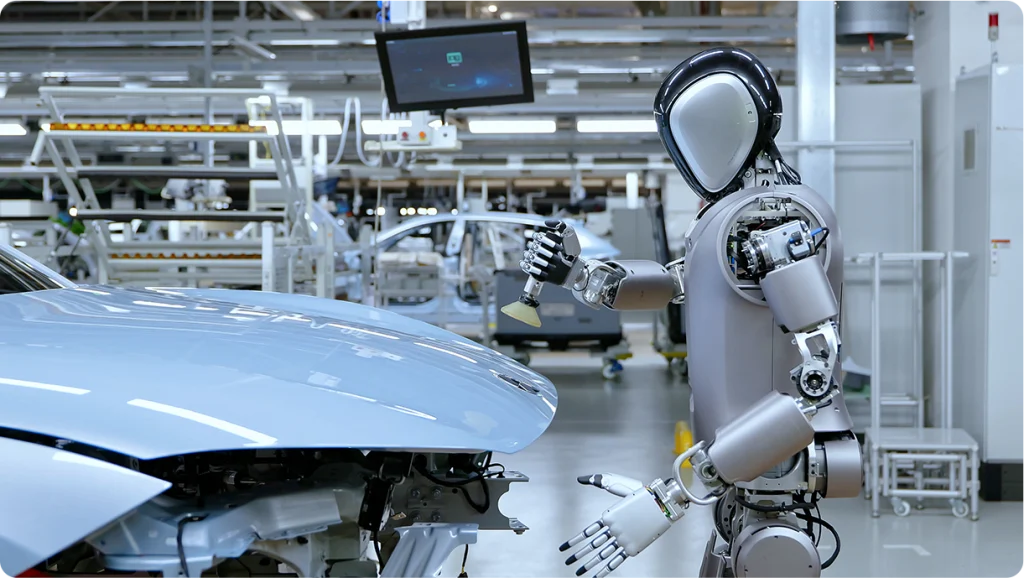China’s manufacturing industry is witnessing a remarkable technological shift as the Walker S1 humanoid robot begins to perform manual tasks at the world’s largest electric vehicle manufacturer, BYD.
Developed by UBTech, a prominent robotics company, the Walker S1 has already received more than 500 orders from major automakers and is poised to ease the labor shortages plaguing the industry.

With its launch, the Walker S1 is now operational in a variety of factory settings, integrating seamlessly with unmanned logistic vehicles and advanced manufacturing systems.
This cutting-edge automation marks a significant step in addressing the severe labor crunch China faces, particularly in sectors like automobile manufacturing, where a 30 million worker shortage is predicted by 2025.
Despite technological advancements, China’s factories still rely heavily on human labor, with robotic arms handling roughly 70% of tasks.
UBTech’s chief brand officer, Tan Min, has expressed the company’s ambitions to reduce human labor to just 10%, with humanoid robots taking over an additional 20% of workload.

This would allow human workers to concentrate on more sophisticated tasks, such as collaboration and tool management, thus pushing the boundaries of automation.
Towering at 5.6 feet and weighing 167.6 pounds, the Walker S1 is designed for a wide array of tasks, from visual quality inspections to assembly line work like tightening screws and sorting parts.
Its introduction not only streamlines production but also enhances worker safety.
Human workers face potential long-term health issues from repetitive tasks, heavy lifting, and exposure to harmful materials; however, the Walker S1 mitigates these risks by taking on physically demanding jobs.

UBTech’s collaborations extend beyond the automotive industry.
Endorsed by Tencent, the company went public on the Hong Kong stock exchange and has since partnered with electronics and logistics giants like Foxconn and SF Express.
These alliances underscore the versatility and transformative potential of humanoid robots across various sectors, revealing vast opportunities for innovation in logistics and electronics.
The launch of the Walker S1 arrives at a critical time for Chinese manufacturers, who are scrambling to bridge labor gaps under the pressure of aging workforces and shifting employment trends.
This pioneering step could redefine not only manufacturing processes but also the future roles of human labor in an increasingly automated world.
